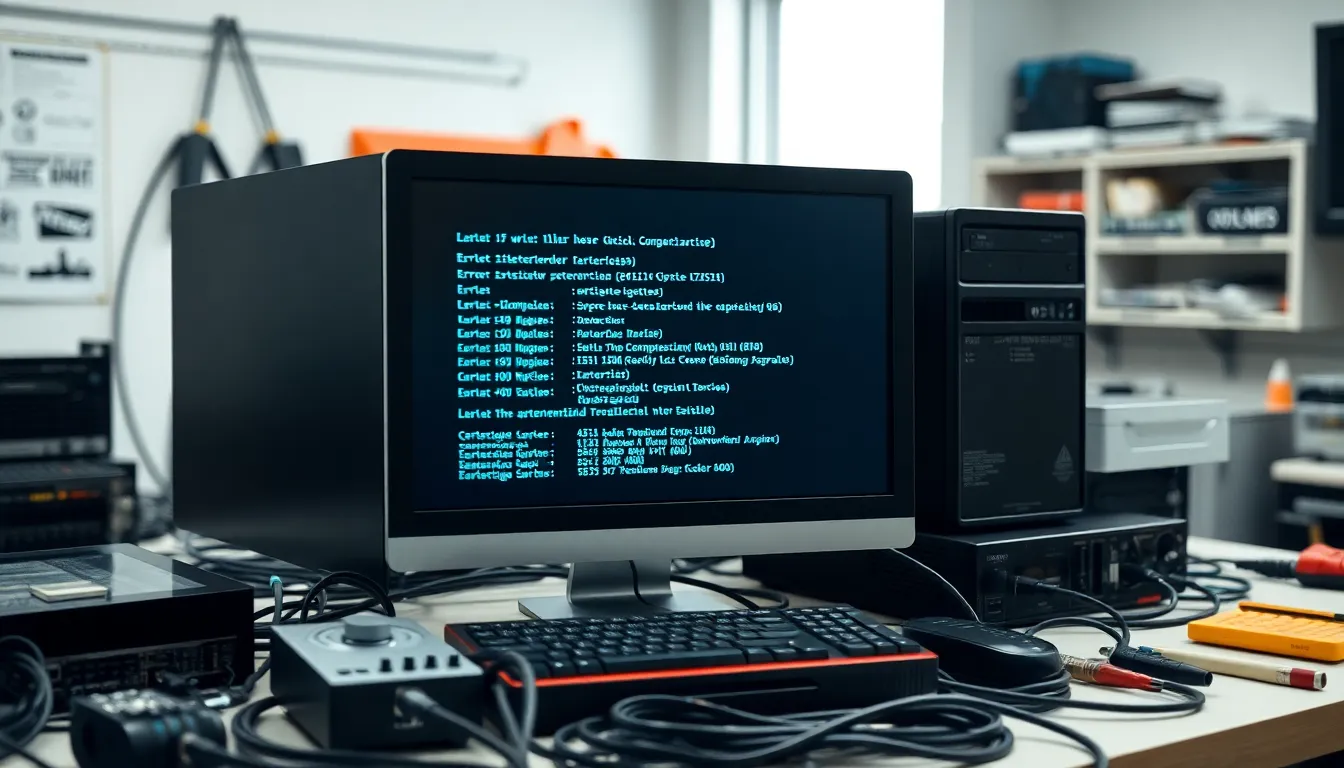Table of Contents
ToggleNavigating the world of HCS 411GITS error codes can feel like trying to decipher ancient hieroglyphics while blindfolded. These pesky codes pop up when least expected, leaving users scratching their heads and wondering if their device has developed a personality of its own. But fear not! Understanding these error codes is like unlocking a secret treasure map that leads to smoother operations and fewer headaches.
Overview of HCS 411GITS Error Codes
HCS 411GITS error codes signify specific issues within a system. Identifying these codes aids in troubleshooting and resolving problems effectively. Common error codes include ‘E01’, which indicates a device communication failure. Users often encounter ‘E02’, pointing to a network disconnection or timeout.
Each code carries distinct meanings and implications. ‘E03’ highlights a hardware malfunction, while ‘E04’ signifies a configuration error. Understanding these codes empowers users to make informed decisions regarding maintenance and repairs.
Documentation frequently outlines the potential resolutions for each error. Users can consult this information to directly address and remedy problems. Persistent errors may require system updates or hardware replacements, indicating the need for professional assistance.
Monitoring performance closely helps in minimizing error occurrences. By taking proactive measures, users can enhance system stability and reliability. Regular inspections and updates contribute to a more seamless experience, reducing frustration linked to error codes.
Familiarity with HCS 411GITS error codes significantly enhances troubleshooting efficiency. Equipped with knowledge about each code’s implications, users can swiftly identify underlying issues and implement solutions. Consequently, understanding these error messages facilitates better device performance and reduces operational disruptions.
Common Error Codes and Their Meanings


Understanding common HCS 411GITS error codes empowers users to effectively troubleshoot issues. Each code indicates a specific problem, allowing for targeted solutions to enhance system performance.
Error Code 100
Error Code 100 indicates a critical device communication failure. This issue often arises when the device cannot establish a connection with the control unit. Symptoms may include unresponsive controls or intermittent signals. Users typically need to check cable connections and ensure that all devices are powered on. Restarting the devices can sometimes clear this error. If the issue persists, consulting documentation for troubleshooting steps is advisable. Persistent communications errors may signal deeper hardware issues requiring professional repair.
Error Code 200
Error Code 200 signifies a network disconnection problem. This code appears when the device loses its network connection, resulting in functionality interruptions. Checking router settings and signal strength often resolves the issue. Users should also verify if the correct network settings are in place. In some cases, updating firmware can restore connectivity. Regular inspection of network hardware is essential for preventing future disruptions. Documentation may offer specific resolution protocols tailored to the HCS 411GITS framework.
Error Code 300
Error Code 300 relates to hardware malfunctions. This error signals internal component failures or operational concerns. Inspecting hardware components is crucial for diagnosing the issue accurately. Users should ensure that all internal connections are secure. Sometimes, dust accumulation can affect performance, making cleaning a necessary step. If malfunctions continue after basic troubleshooting, professional inspection of the hardware may be essential. Following standard operating procedures can help mitigate risks of this and similar error codes in the future.
Troubleshooting HCS 411GITS Error Codes
Troubleshooting HCS 411GITS error codes requires a systematic approach. Identifying the specific error code is crucial for effective resolution.
Step-by-Step Troubleshooting Guide
- Identify the error code displayed on the device. Check the user manual for a detailed description of the code.
- Verify all physical connections related to the device. Loose cables can cause communication failures.
- Examine network settings for accuracy. Mismatched configurations often lead to network disconnection issues.
- Restart the device to clear temporary errors. A simple reboot can resolve many minor glitches.
- Inspect hardware components for visible damage. Faulty parts may require replacement or professional repair.
Tips for Preventing Errors
Regular system maintenance plays a vital role in error prevention. Schedule routine inspections of hardware components to identify wear and tear. Update firmware and software periodically to ensure compatibility. Implement proper data backup practices to guard against unexpected failures. Monitor network stability to detect issues before they escalate. Train staff on identifying and addressing common error codes to enhance overall responsiveness.
When to Seek Professional Help
Encountering HCS 411GITS error codes may sometimes exceed typical troubleshooting capabilities. Persistent issues, especially those involving critical error codes like E01 or E100, often indicate deeper system problems requiring expertise. Engaging a professional becomes essential if basic troubleshooting steps do not resolve the errors.
Technical experts possess the knowledge to diagnose complex errors accurately. They can access proprietary tools and resources that facilitate comprehensive analysis and repair. Users should consider consulting a technician if the error codes recur despite implementing standard resolutions.
Experts can efficiently handle hardware issues, such as those indicated by Error Code 300. If device malfunctions persist and affect overall performance, prompt professional intervention is warranted. Additionally, network disconnections marked by Error Code 200 require a detailed examination that professionals can provide.
Another scenario that necessitates seeking help involves configuration errors represented by Error Code E04. Misconfigurations can lead to significant disruptions in system operations. Experts are equipped to rectify these issues, ensuring optimal device functionality.
Finally, user capacity varies; not everyone possesses the technical skills required for advanced troubleshooting. He or she should prioritize getting assistance from professionals, particularly when faced with unresolved error codes demanding specialized knowledge. Taking these steps can lead to improved system performance and reduced operational downtime.







